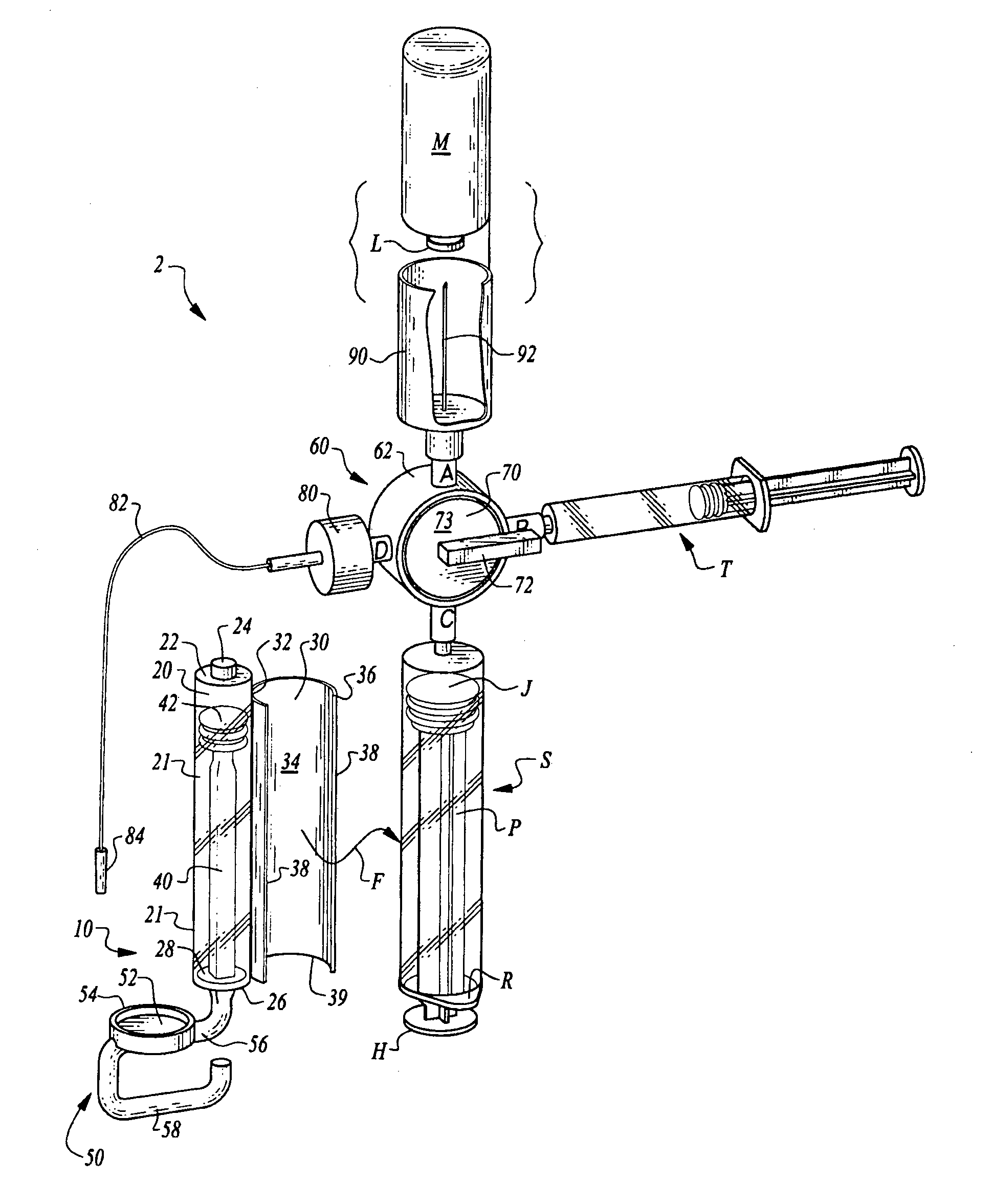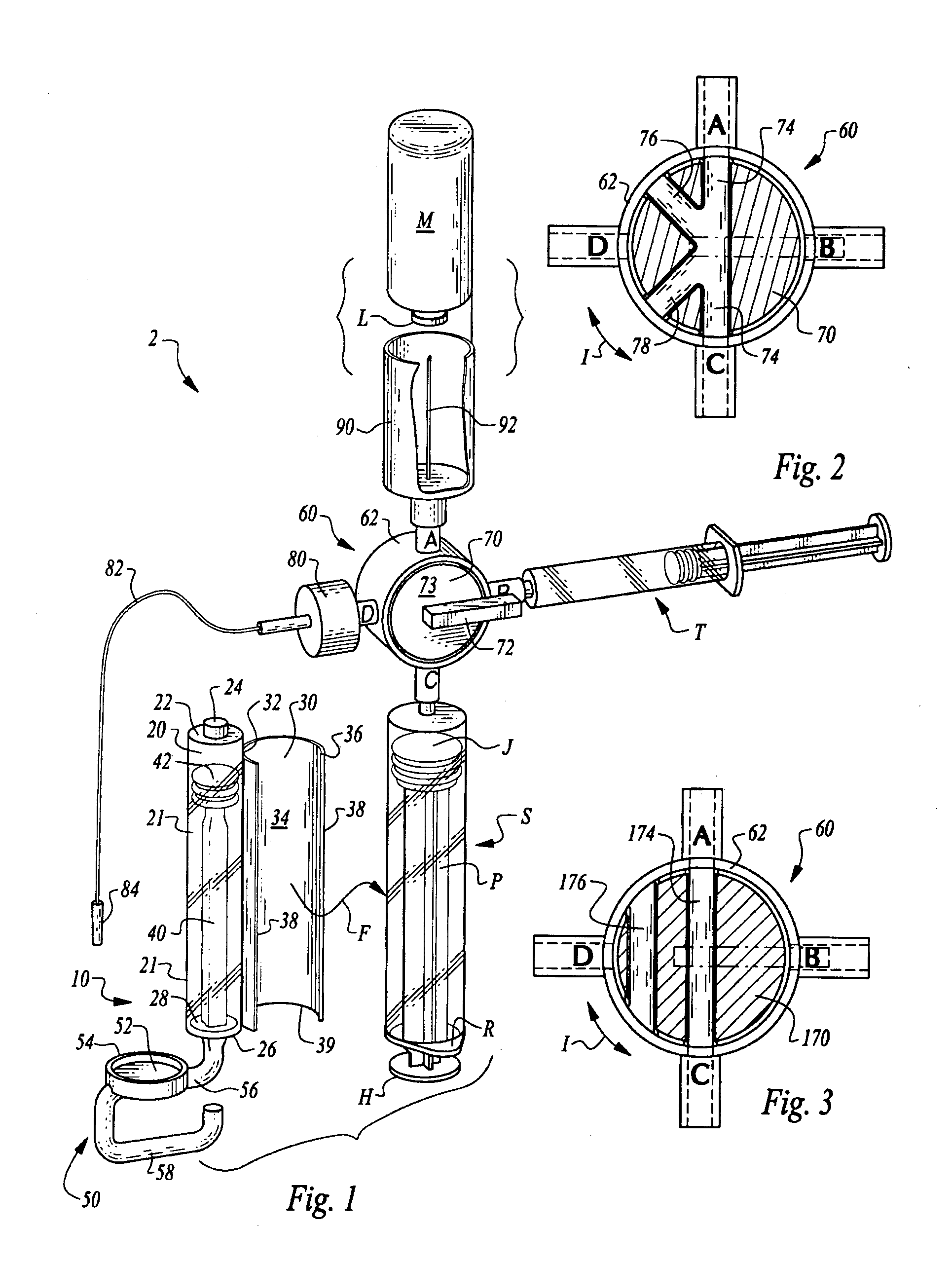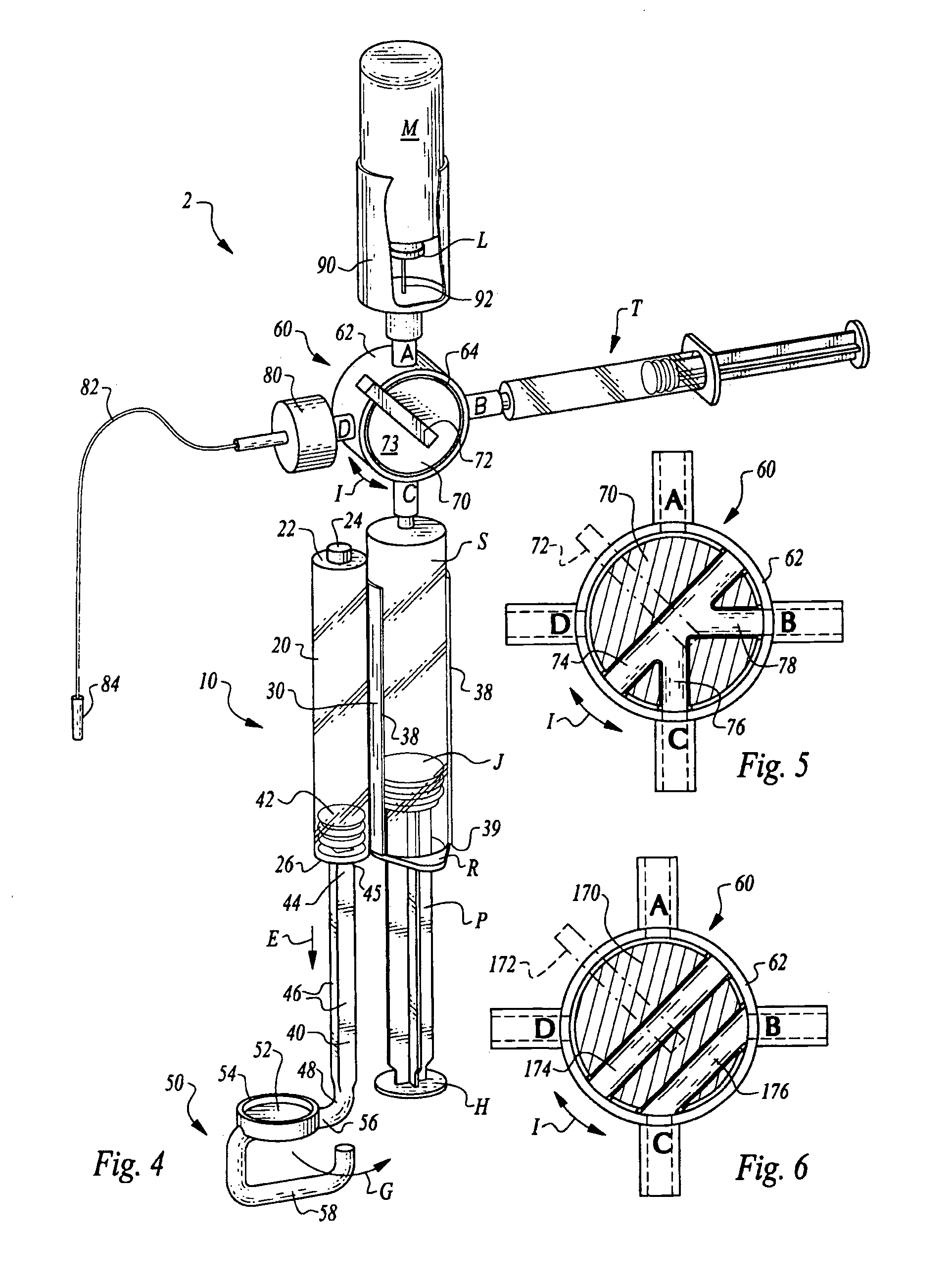Compact non-electric medicament infuser
a non-electric, infuser technology, applied in the direction of filtering accessories, valves, intravenous devices, etc., can solve the problems of pump failure, inability to easily change the force, incomplete or inaccurate medication delivery, etc., to achieve the effect of convenient attachment to the patien
- Summary
- Abstract
- Description
- Claims
- Application Information
AI Technical Summary
Benefits of technology
Problems solved by technology
Method used
Image
Examples
Embodiment Construction
[0055]Referring to the drawings, wherein like reference numerals represent like parts throughout the various drawing figures, reference numeral 10 is directed to an infusion device for use with a syringe S, such as within an overall infusion assembly 2 for delivery of medicament over time from the syringe S into a patient or animal. The infusion device 10 utilizes a vacuum or another resistance based force to energize and “activate” the arm 40 and driver 50. The arm 40 and driver 50 together are known as the force applicator and when activated, may act upon a plunger P of the syringe S so that a piston J within the syringe S moves to drive the medicament out of the syringe S and to the patient.
[0056]In essence, and with particular reference to FIG. 1, basic details of this invention are described, according to a preferred embodiment. The infusion assembly 2 in this preferred embodiment includes the infusion device 10 removably coupleable (along arrow F) to the syringe S. The syringe...
PUM
 Login to View More
Login to View More Abstract
Description
Claims
Application Information
 Login to View More
Login to View More - R&D
- Intellectual Property
- Life Sciences
- Materials
- Tech Scout
- Unparalleled Data Quality
- Higher Quality Content
- 60% Fewer Hallucinations
Browse by: Latest US Patents, China's latest patents, Technical Efficacy Thesaurus, Application Domain, Technology Topic, Popular Technical Reports.
© 2025 PatSnap. All rights reserved.Legal|Privacy policy|Modern Slavery Act Transparency Statement|Sitemap|About US| Contact US: help@patsnap.com



